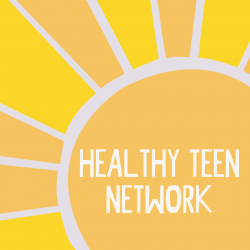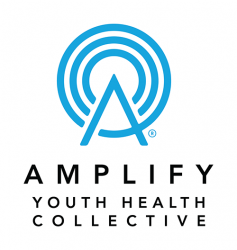Advocates staff provides technical assistance, training and resources to national, state, and local organizations regarding youth-centered reproductive and sexual health/rights/justice public policy and communications. Policy staff draft model legislation and policy briefs, track and provide in-depth policy analysis, and can support partners in building out advocacy strategies to improve policies and practices at the federal, state, and local levels. In addition, communications staff can assist with talking points, public speaking training, and training regarding media outreach. Staff is also available to assist organizations wishing to raise the visibility of young people and their experiences and needs through social or traditional media. For more information about public policy assistance contact Diana@advocatesforyouth.org. For more information about communications assistance contact Emily@advocatesforyouth.org
Training Hub
The Sex Education Collaborative Training Hub lists trainings for sex educators, facilitators, and other professionals on best practices for sharing important information with clients and the public. From teaching anatomy inclusively to effectively addressing bias in the classroom to addressing racial justice and equity in sex education, the Training Hub includes trainings, technical assistance, and policy support from state, regional, and national leaders in the field of sex education.
Please note: The Training Hub includes both in-person and online professional trainings. If you see a training you are interested in and it isn’t listed as virtual, please reach out directly to any of our members to find out what's possible!
Trainings Offered by State-Based and National Organizations
Displaying results 121 - 125 of 154Working Effectively with Adolescents
This workshop will help sex education instructors use research on adolescent social, cognitive, and biological development to improve the way they communicate with adolescents. Participants will learn techniques for engaging with adolescents and building buy-in to messages about behavior.
- Indicator 1 (K-12): Demonstrate three techniques to create an inclusive and affirming learning environment. (S)
- Indicator 1 (K-12): Demonstrate the ability to build rapport with students. (S)
- Indicator 3 (K-12): Explain the differences between positive vs. shaming approaches to teaching sex education.
- Indicator 6 (K-12): Describe three strategies for actively involving parents, caregivers, and other trusted adults in a sex education program.
- Indicator 2 (K-12): List three physical, three social, and three emotional changes that occur during puberty.
- Indicator 1 (K-12): Explain three reasons why it is important to respond to every question students ask when teaching sex education.
- Indicator 2 (K-12): Demonstrate the ability to effectively respond to three different types of challenging questions. (S)
Sexuality ABCs: Abstinence, Birth Control and Condoms
Sexuality ABCs: Abstinence, Birth Control and Condoms will leave you with a deeper understanding of contraceptive methods and knowledge on how to develop and teach lessons that are designed to help reduce rates of unintended teen pregnancy while learning about the latest trends in teen contraceptive use.
Format/platform: Online Learning Management System (Canvas e-learning), hosted by Rutgers University
- Six-hours of total contact time utilizing videos, podcasts, instructional games, discussion boards, written assignments, presentations, readings, and visual animations
- Asynchronous
- Instructor-led
All content is aligned to the National Sexuality Education Standards, the National Teacher Preparation Standards for Sexuality Education, the Professional Learning Standards for Sex Education, and the Areas of Responsibility and Competencies for Health Education Specialists.
- Indicator 1 (6-12): Explain fertilization, implantation, conception, and how pregnancy occurs.
- Indicator 2 (6-12): Demonstrate the steps necessary for effective external and internal condom use and how to access condoms. (S)
- Indicator 3 (6-12): Describe the differences in mechanisms of action and access between emergency contraception and the abortion pill.
- Indicator 4 (6-12): Explain methods of contraception, including the latest medical advances that are popular among young people.
- Indicator 6 (6-12): Identify three federal and/or state laws that impact young peoples’ access to effective reproductive and sexual health care (e.g. age of consent for services, confidential access to health care services, and access to condoms)
Addressing the Needs of LGBTQ Youth
The ability to provide services for lesbian, gay, bisexual, transgender and queer or questioning (LGBTQ+) youth begins with an understanding of the nature of gender and sexual orientation, correct terminology, basic knowledge of the “typical” experiences of the population, and an awareness of the increased risk factors experienced by these youth. In this workshop, participants will have an opportunity to explore this important content and identify strategies for providing welcoming and affirming services appropriate for LGBTQ+ youth. The facilitator will share an overview of the theory, current issues, and research-based strategies important when working with LGBTQ+ populations. Participants will then begin to identify practices that support effective service design and delivery and will lead to the most inclusive and impactful practices. Participants also strategize ways to incorporate these practices into their services and settings.
Objectives of this course:
- Examine the key theories and terminology around gender identity/expression and sexual orientation.
- Define the stages of “coming out,” i.e. self-awareness and identity disclosure.
- Identify increased risk factors for LGBTQ+ youth.
- Strategize effective ways to work with and support LGBTQ+ youth.
- Identify resources for LGBTQ+ youth.
- Develop a personal plan of action for positively addressing the needs of LGBTQ+ youth.
Visit ETR's Training & TA Form to submit your request and receive cost information.
- Indicator 1 (K-12): Demonstrate three techniques to create an inclusive and affirming learning environment. (S)
- Indicator 1 (K-12): Explain how availability of supportive school staff, presence of Gay-Straight Alliances (GSAs), LGBQ-inclusive curricular resources, and the presence of comprehensive, enumerated anti-harassment school policies are related to improved school climate for students of all sexual orientations.
- Indicator 4 (K-12): Demonstrate the use of inclusive and affirming language. (S)
- Indicator 5 (K-12): Demonstrate the ability to intervene effectively in homophobic and other bullying comments and actions. (S)
- Indicator 6 (K-12): Explain three ways that LGBQ+ youth are at disproportionate risk for health disparities.
- Indicator 8 (K-12): Explain why it is essential to include positive portrayals of LGBQ+ people in lessons.
- Indicator 9 (K-12): Demonstrate three strategies that can be used to include positive portrayals of LGBQ+ people in lessons. (S)
- Indicator 1 (K-12): Explain how availability of supportive school staff, presence of Gay-Straight Alliances (GSAs), gender-inclusive curricular resources, and the presence of comprehensive enumerated anti-harassment school policies are related to improved school climate for students of all gender identities.
- Indicator 2 (K-12): Demonstrate the use of inclusive and affirming language. (S)
- Indicator 5 (K-12): Demonstrate the ability to intervene effectively in transphobic, sexist, misogynistic and other gender-related bullying comments and actions. (S)
Virtual PD - Student Centered Learning When Teaching Sex Education
Virtual Professional Development is a simulated classroom where teachers can practice teaching student avatars using short scenarios and support from an instructional coach, so they can quickly learn and master the skills they most need to be effective. With upper elementary, middle and high school classrooms, Virtual PD has scenarios for teachers of all grade levels across a wide range of topics aligned with the Professional Learning Standards for Sex Education (PLSSE). You can watch the video here (link is external) to learn more about Virtual PD.
Using the Virtual Professional Development classroom simulator, the educator will practice implementing Student Centered Learning When Teaching Sex Education with the student avatars. In this scenario, the educator will be modifying an activity that teaches their students how to use condoms correctly for varying learning styles. Participants are encouraged to stretch to use a learning style different from those they are personally strong at. Key content and ideas for adaptations are included in the short video educators should watch prior to the simulation so they can be prepared to use their adaptations.
- Indicator 2 (K-12): Demonstrate three student-centered instructional approaches that support a variety of learning styles. (S)
Additional Trainings offered by out-of-state organizations
- ‹ previous
- 8 of 49
- next ›
2SLGBTQ+ Inclusivity for Sex Educators
- Indicator 1 (K-12): Demonstrate three techniques to create an inclusive and affirming learning environment. (S)
- Indicator 7 (K-12): Demonstrate the ability to analyze and tailor lesson plans to match the age, developmental stages, cultural backgrounds, and other identities of students. (S)
- Indicator 2 (K-12): Define sexual orientation and sexual identity, including that everyone has both.
- Indicator 3 (6-12): Explain the difference between sexual orientation, sexual behavior, and sexual identity.
- Indicator 4 (K-12): Demonstrate the use of inclusive and affirming language. (S)
- Indicator 5 (K-12): Demonstrate the ability to intervene effectively in homophobic and other bullying comments and actions. (S)
- Indicator 6 (K-12): Explain three ways that LGBQ+ youth are at disproportionate risk for health disparities.
- Indicator 7 (K-12): Identify three credible, medically accurate, youth-friendly resources that can provide information or support related to sexual orientation.
- Indicator 8 (K-12): Explain why it is essential to include positive portrayals of LGBQ+ people in lessons.
- Indicator 2 (K-12): Demonstrate the use of inclusive and affirming language. (S)
- Indicator 3 (K-12): Define gender identity and sex assigned at birth.
- Indicator 4 (K-12): Explain how gender identity and gender expression are distinct from each other and from sexual orientation.
- Indicator 5 (K-12): Demonstrate the ability to intervene effectively in transphobic, sexist, misogynistic and other gender-related bullying comments and actions. (S)
- Indicator 6 (K-12): Explain three ways that transgender and gender expansive youth are at disproportionate risk for health disparities.
- Indicator 7 (K-12): Identify three credible, medically accurate, youth-friendly resources that can provide information or support related to transgender and gender expansive people.
- Indicator 8 (K-12): Explain why it is essential to include positive portrayals of transgender and gender expansive people in lessons.
- Indicator 9 (K-12): Demonstrate three strategies that can be used to make lessons affirming for transgender and gender expansive people. (S)




